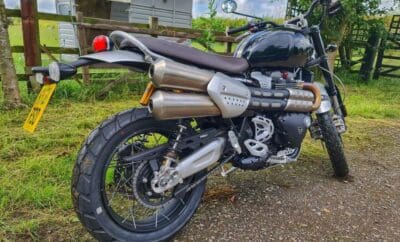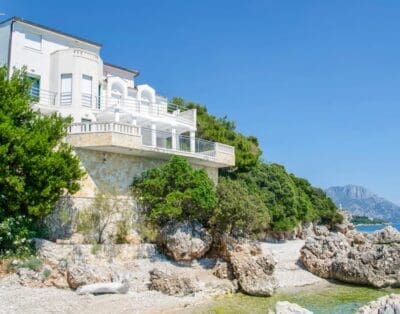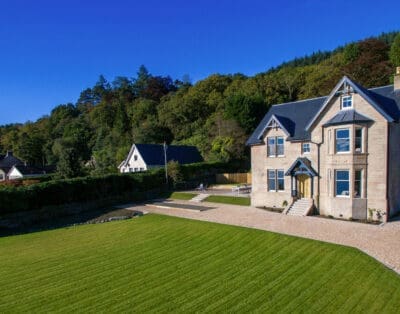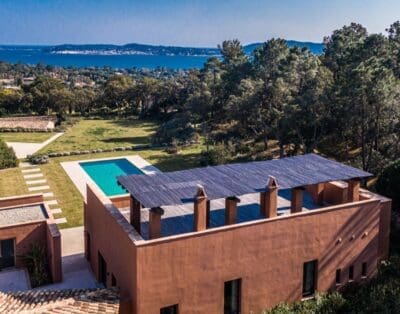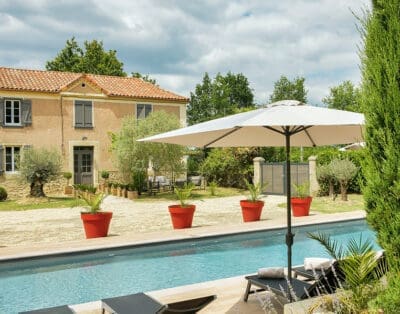Triumph Bonneville Bobber – Modern Retro
The Bobber style of bikes was born In the ‘40s when bikers would strip back and cut down their bikes in the never-ending pursuit of more speed. Bikes were chopped and lightened to make them faster, inadvertently creating the Bobber style.
Today, Triumph continues the tradition with their Bobber. Today’s Bobber is styled to look like a traditional Bobber and is a fitting tribute, a compliment to those bikes and the style of the day.
Chopped
True to the original Bobber ethos, this bobber is based on the Bonneville, with a few modifications. At the front, there is a fat, 150-section front tyre, but the rear is where the most dramatic changes have been made. The seat unit and rear frame section have been cut away, leaving a single seat and what appears to be a rigid rear end. In fact, Triumph has created what they call a swing cage. Instead of a conventional swing arm, there’s a tube triangle that appears to be part of the frame. The mono-shock rear suspension is tucked under the seat, out of site.
The cut-down nature of a Bobber dictates a single seat and Triumph’s Bobber has a seat height of only 690mm, so it’s easy to flat-foot with both feet and even stand up out of the seat. The bars are nice and wide and you sit feet slightly forward and fairly wide apart. It’s very comfortable.
Well Suspended
At the front, you have 47mm Showa cartridge forks and an unbranded rear mono-shock.
These days our roads are in a shocking state. That, coupled with the freezing weather and rain means I’ve not really been able to explore the limits of the Bobber. Despite this, I’m not a slim guy and the suspension has been great. It’s not bouncy, copes with the bumps well, isn’t too firm or harsh at the rear and feels very comfortable. There’s a big aftermarket and tuning scene for these so upgraded suspension is plentiful should you want to go down that route. In fact, Triumph is all about personalisation with the Bobber. They have a range of no less than 77 genuine Triumph accessories, and there’s a big aftermarket scene so you can be as wild or mild as you want.
Triumph have fitted twin-piston Brembo sliding calipers up front, working on 310mm discs, which do a great job. The rear brake employs a single piston unbranded calliper and single disc. The brakes are great and offer good feel. The weather has been horrible so I haven’t had a chance to push the chassis and brakes, but they have been excellent for me.
Nice and Simple
In a world where TFT screens are the norm and the handlebars are festooned with a million buttons for features we didn’t even know we needed, the Bobber is a breath of fresh air.
You have a single clock with an analogue speedo and a multifunction LCD panel that shows you fuel consumption, trip mileage, range, traction control status, rider mode, gear indicator and a fuel gauge. It’s perfect and all you need in my opinion.
You have ABS, of course, 2 rider modes; rain and road, cruise control with single button operation which is very handy, and switchable traction control. It’s clean, uncomplicated, and follows the theme of the bike; uncluttered, simple and pure.
The Beating Heart
The Bobber is based on the Bonneville T120, so shares the same 1200cc parallel twin. It’s slightly re-tuned to suit the style of the bike, but it’s a beautiful engine, one of my favourite engines in fact.
It makes 77bhp and 106Nm torque which is a couple of bhp down on the Bonneville but re-tuned to have a flatter, fatter torque curve. These aren’t huge figures, but it’s plenty for this bike. It’s punchy and responsive, but this is a cruiser, not a sports bike and the balance of form and function works perfectly.
The charismatic engine has a 270-degree firing interval, giving a beautifully smooth and linear power delivery. 270-degree cranks are pretty much the norm now. Just about everyone does them, from Suzuki to KTM, Aprilia to Yamaha and more. It is the engine configuration of choice these days.
Verdict
For me, the jewel in the crown with the Triumph Bobber is the beautiful 1200cc parallel twin engine. It is dripping with character and feels punchy and responsive. Even with this standard exhaust system fitted it sounds superb, with a lumpy burbly at low revs and a deep, alluring, rasp at higher revs, followed up with a smattering of popping on overrun.
I love the style of the Bobber; the ‘40s, chopped-down look is very different from the usual modern retro stuff. It handles well, sounds glorious and is well-built, what’s not to like?
With the wide bars, feet slightly forward riding position and low seat, it’s surprisingly comfortable and easy to ride too.
The simplicity of the Bobber just works for me. It looks great and isn’t festooned with unnecessarily complicated electronics, but despite the 1940’s look, it is modern and safe, with enough electronics to help. The LED headlight and 12-litre tank just help to make it that bit more practical and useable.
Specifications Table
Engine – 1200cc Liquid cooled, 8 valve, SOHC, 270° crank angle parallel twin
Frame – Tubular steel, twin cradle frame
Front Suspension – Ø 47 mm Showa cartridge forks
Rear Suspension – Mono-shock RSU with linkage
Front Brakes – Twin Ø310mm disc, Brembo 2-piston sliding axial calipers
Rear Brakes – Single Ø255mm disc, Nissin single piston sliding axial calliper
Seat Height – 690 – 700 mm
Power – 78 PS / 76.9 bhp (57.5 kW) @ 6100 rpm
Torque – 106 Nm (78.2 lbft) @ 4000 rpm
Wet weight – 251 kg (553 lb)
Fuel Tank Capacity – 12.0 litres (3.2 US gal)
Service interval – 10,000 miles (16,000km) / 12 months
On The Road Price From £12,995.00



